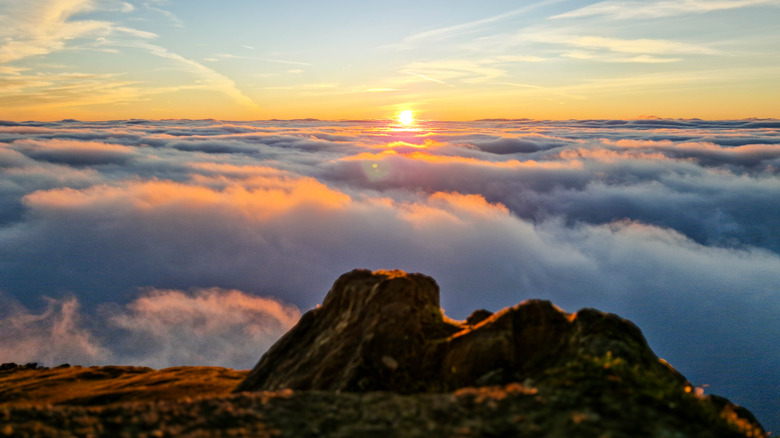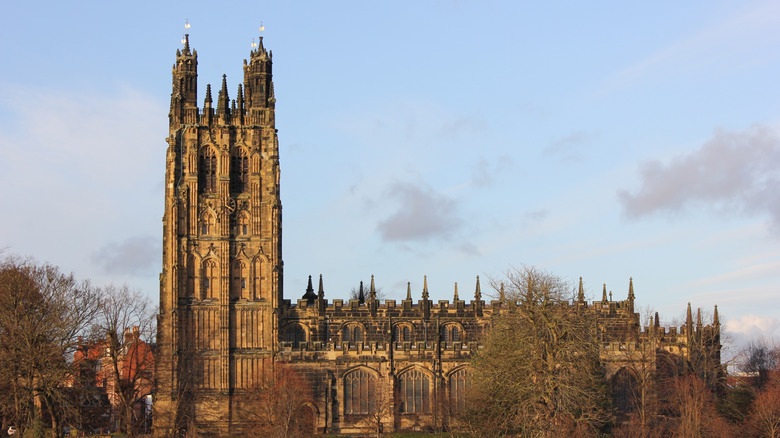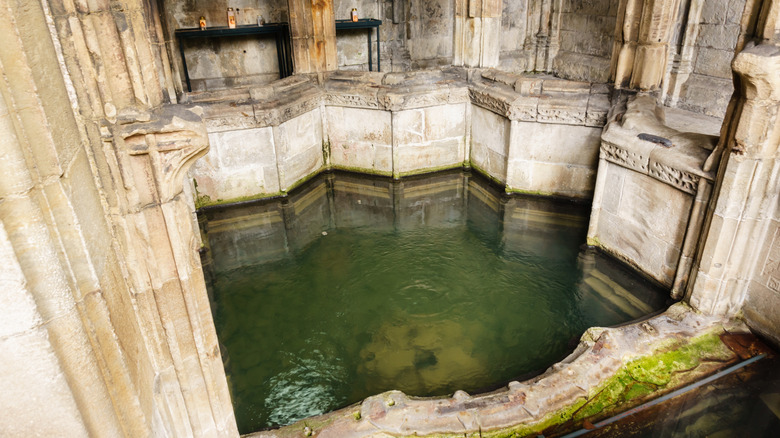This Tiny And Underrated European Country Has Its Own Incredible Collection Of '7 Wonders' To Explore
It's no surprise that the Seven Wonders of the World are bucket-list-worthy destinations for globetrotters and dreamers. Tourists spend the night at this five-star hotel to enjoy a luxurious front-row seat to view the Pyramids of Giza in Egypt. People flock to the Colosseum in Italy on the first Sunday of the month to see it for free. Or they roam amongst the remains of the Hanging Gardens of Babylon, picturing what once stood there thousands of years ago. These iconic attractions are found all over the world, with many people making it their travel goal to visit each one of them. Meanwhile, in Wales, an underrated European country with breathtaking coastline, you don't need to book flights in every direction to experience the Seven Wonders. This outstanding mountainous paradise, with its coastal plains, historic castles, and rich past, has a list of its own, comprising waterfalls, mountains, towers, and other marvels. The landmarks on the list weren't designated officially by the government, but by an anonymous poet from the 18th century.
"Pistyll Rhaeadr and Wrexham steeple,
Snowdon's mountain without its people,
Overton yew trees, St Winefride's well,
Llangollen bridge and Gresford bells."
All it took was four lines of rhymes to spotlight these seven cultural sites. The poem does give us a hint about these locations — its unknown author was specifically exploring the northern region of the country. And since Wales is tiny, you can drop by all the places listed in one day, starting from the first wonder mentioned in the poem. However, it's always smarter to turn it into a weekend-long road trip so you can cross them off one by one, take your time at each attraction, and enjoy the scenery along the way.
Discover natural beauty and human ingenuity in Wales
You can either visit all the places following the poem's order or organize a different route to maximize your time. For the latter, start with Pistyll Rhaeadr, then Llangollen Bridge and Overton, with a stop at Wrexham Steeple. From there, head to All Saints Church to see the Gresford Bells, then St. Winefride's Well, and end it at Snowdon. For the sake of ease, we'll describe each landmark in the same order as the poem.
Hidden in the Berwyn Mountains is the breathtaking Pistyll Rhaeadr. Dropping down 240 feet, this cascade is the tallest in Wales, located near the village of Llanrhaeadr-ym-Mochnant. You can hike around the area to admire the waterfall from different perspectives before making your way to the second wonder of Wales: Wrexham Steeple. Boasting a height of 130 feet, Wrexham Steeple juts out of St. Giles' Church, about an hour's drive from Pistyll Rhaeadr. Unfortunately, we'll never know why the poet singled out the church's tower — or why they referred to the tower as a steeple in the first place. The medieval architectural masterpiece is adorned with intricate carvings, and inside, you can ascend the spiral staircase to get a bird's-eye view of Wrexham's Georgian and Victorian cityscape.
An hour-and-a-half drive east will get you to Snowdon. At 3,560 feet, Snowdon is not only Wales' highest mountain but also its most prominent feature. This majestic peak is by no means a secret, but why appreciate it from afar when you can be right in the heart of it? Six different routes guide you to the top of the mountain, and make no mistake — they're all hard to conquer, so be well prepared if you wish to tackle the climb.
Journey to sacred shrines and medieval structures
The third line of the rhyme mentions yew trees at St. Mary's churchyard in Overton-on-Dee. You'll notice that they're arranged in a circle. These aren't your average trees, though — what makes them so noteworthy is that they are believed to be around 2,000 years old. They possess such significance that Queen Elizabeth II herself visited the church in 1992 and planted one more tree. Ending the third line is St. Winefride's Well, just 30 miles from the yew trees. This medieval holy site is where spring water pours into the well. Its healing properties may have been the reason why this place became a sacred shrine — soaking in the water is still practiced today. Whether religious or not, the architecture alone commands attention.
Another 45 minutes will bring you to Llangollen Bridge and its striking arches. The current structure dates back to the 16th century, which was actually built in place of a 14th-century bridge. With the River Dee flowing under the medieval bridge, one can completely understand why the poet chose to highlight this historic landmark. And finally, Wales' seven wonders end with the Gresford Bells at All Saints' Church. The bells themselves are traced back to the 18th century, when they were first mentioned in the parish registry. But it's not their design that makes an impression — it's the dominating sound of their chime. You can still hear their tolling at Sunday and Tuesday masses.
People are constantly making new suggestions for the Seven Wonders of the World — some say that China's Terracotta Army also deserves to be on that list. So, who's to say that we can't do the same for Wales? Brecon Beacons, for instance, is a great pick, a Welsh national park where you can witness remote beauty and stargazing.


